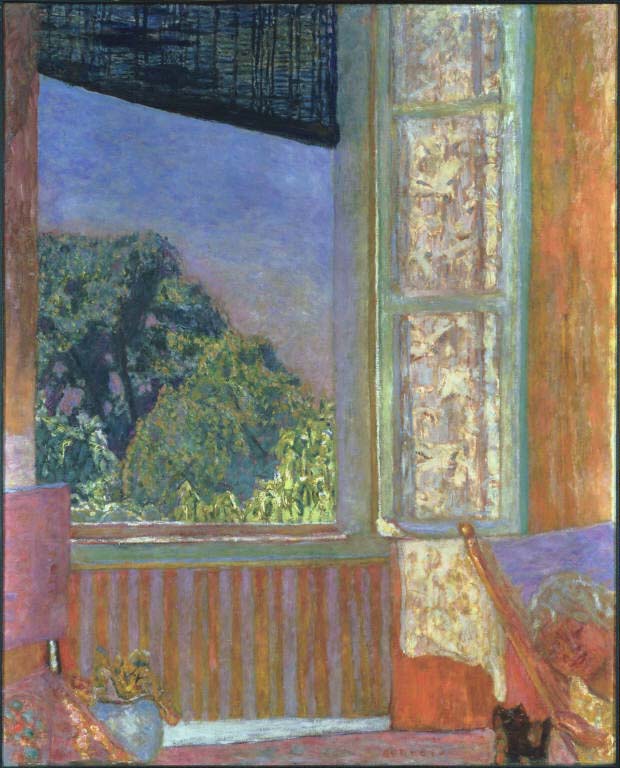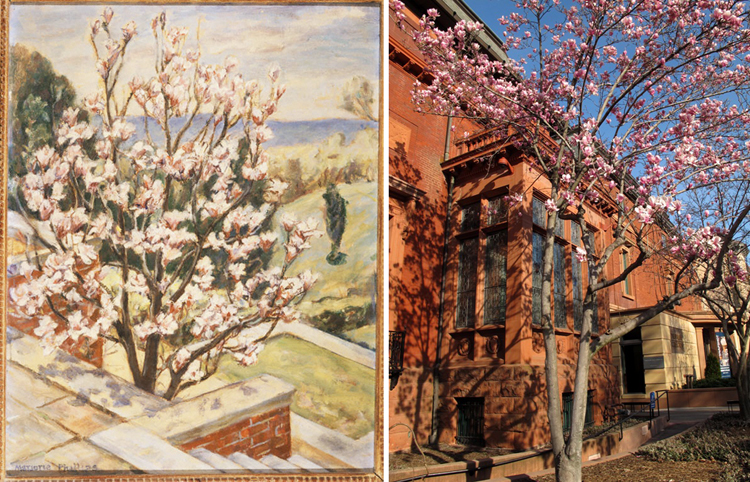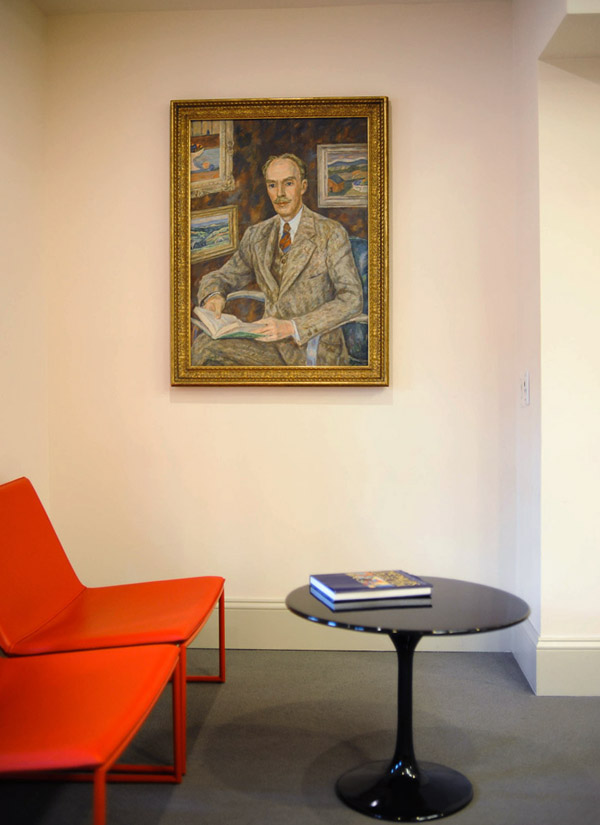
Pierre Bonnard, The Open Window, 1921. Oil on canvas, 46 1/2 x 37 3/4 in. The Phillips Collection, Washington, D.C. Acquired 1930
A couple of days ago, I attended a spotlight talk focused on one of my favorite paintings in the Collection: Pierre Bonnard’s The Open Window (1921). We began with a quiet reflection on the painting, after which Phillips Librarian Karen Schneider guided our group to an understanding of the subject matter, palette, and structural lines of the work.
Examining the painting, the viewer is drawn first to the scene out the window–the serenity of the lush green trees and fading blue sky of the world outside. Then we observe the hard lines of the window frame and the bright, warm colors of the interior setting. Last, we notice a woman sitting, perhaps sleeping, in the bottom right hand corner, blurred and barely discernible. I almost didn’t notice her at all. This was in fact the artist’s intent, I learned. With contrasting hues and structural lines, Bonnard is recreating the experience of going out into the bright light and then coming back inside. We are caught in the moment when vision is temporarily impaired, and we only catch the outline of a form out of the corner of our eye. The outside is still beckoning.
Did you know that Pierre Bonnard actually visited The Phillips Collection in 1926? After complementing Marjorie Phillips on her paintings, he asked to borrow a brush so he could touch up one of his works in the Collection. Fortunately, she said she didn’t have one with her and convinced him not to alter the work!
Jane Clifford, Marketing Intern


